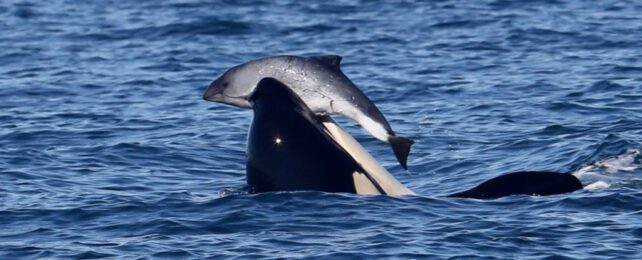Southern Resident killer whales are highly picky eaters. This beloved and highly endangered population of orca (Orcinus orca) consumes virtually nothing but Chinook salmon, gulping down around two dozen fish a day depending on the season.
Unlike their mammal-eating relatives, these predators of fish have no reason to pick on porpoises…
And yet, they do. Over and over and over again.
Between 1962 and 2020, scientists have cataloged a total of 78 instances where resident orcas harassed porpoises in the Salish Sea, which stretches between Washington State in the US and British Columbia in Canada.
The orca's bullying behaviors include pushing the porpoise along with their nose, holding the porpoise in their mouth, balancing the porpoise above water, slapping the porpoise with their tail, and raking the porpoise with their teeth.
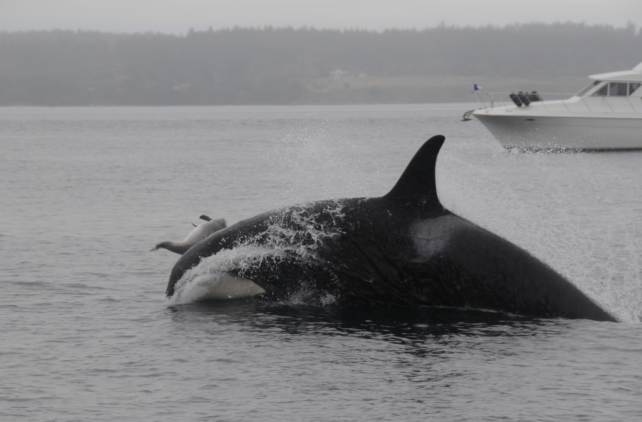
Pods of orcas sometimes even play 'pass the porpoise', which involves tossing the poor creature from one individual to the next.
Whale watchers who have witnessed these sightings often say the orcas are 'toying' with the porpoise, letting it escape briefly before chasing after it again.
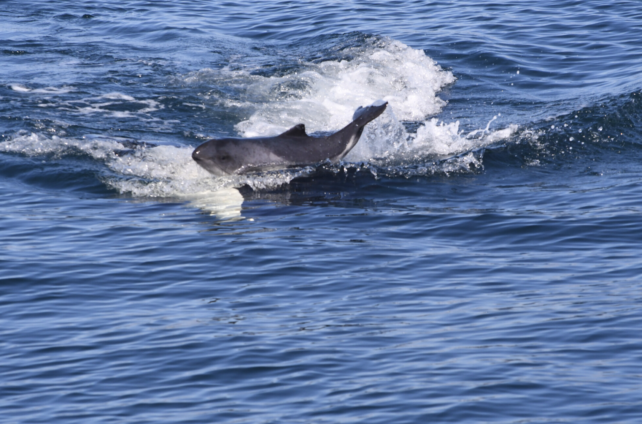
In 28 of the recorded sightings, the orca killed or was suspected to have killed the porpoise, which was usually either a harbor porpoise (Phocoena phocoena) or a Dall's porpoise (Phocoenoides dalli). Strangely, there was no evidence of any of the kills being consumed.
In most cases, the porpoise victims were young and small – about the size of a Chinook salmon, which is a large species of fish that can sometimes reach a length of nearly 1.5 meters (5 feet) and a whopping weight of 59 kilos (129 pounds).
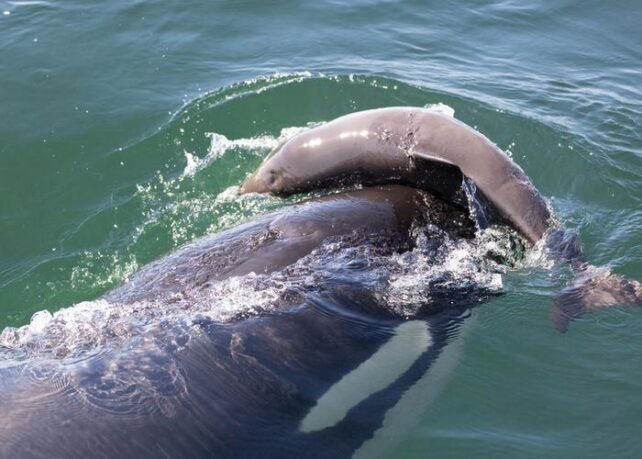
The odd behavior was observed in all three pods of the orca population, although it initially started in the L pod before seeming to spread to others – a possible sign of social learning and cultural transmission.
The findings on porpoise attacks were put together by a team of marine mammal researchers from a variety of institutions in the US, UK, and Canada, which are working to keep the southern residents from passing into extinction.
The pacific northwest of North America is famous for its orcas, but what many don't realize is that there are multiple ecotypes that live there, and they do not interbreed or eat the same food in spite of their habitats overlapping at times.
Transient orcas are the ecotype that feed on seals, porpoises, and whales, while the residents eat mostly Chinook salmon.
Given the rapid decline of salmon in recent decades due to human activity, there are only about 75 residents left.
"I am frequently asked, why don't the Southern Residents just eat seals or porpoises instead?" says Deborah Giles, a leading expert on the species at Wild Orca, which seeks to reverse the decline of the species through conservation research.
"It's because fish-eating killer whales have a completely different ecology and culture from orcas that eat marine mammals – even though the two populations live in the same waters. So we must conclude that their interactions with porpoises serve a different purpose, but this purpose has only been speculation until now."
Based on their analysis, Giles and her colleagues have put forward three possible reasons for a fish-eating orca to pick on a porpoise.
One of them is a cruel form of 'play' that could be pleasurable or could have benefits for group coordination, cohesion, and social affiliation.
Indeed, the authors note, porpoise harassment sometimes involves multiple orcas of various ages acting 'cooperatively'.
For example, Southern Residents have been observed "carrying the porpoise on their backs, or "shouldering" the porpoise between multiple individuals, almost appearing as a "game" where the goal was to keep the porpoise out of the water."
Sometimes they do this for hours, long after the porpoise has died.
Catching or playing with porpoises could also be good hunting practice, the authors note, although differentiating that explanation from play "is not always possible, and the two are likely interrelated."
The final hypothesis put forward by Giles and colleagues is particularly interesting, suggesting in some instances the orcas may be attempting to care for porpoises that are weak or ill as though they were the orca's own young.
This may seem like a strange way to 'mother', but resident orcas in the past have been caught carrying the carcass of their deceased newborns on their noses for days at a time.
In the image below, a newborn porpoise can be seen cradled between two orcas. The young mammal eventually escaped and swam back to its mother.
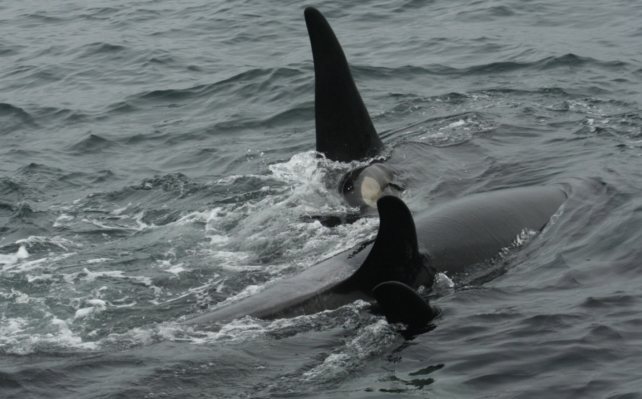
"Mismothering behavior – also known as 'displaced epimeletic behavior' to scientists – might be due to their limited opportunities to care for young," Giles explains.
"Our research has shown that due to malnutrition, nearly 70 percent of Southern Resident killer whale pregnancies have resulted in miscarriages or calves that died right away after birth."
But it's not just orcas that porpoises have to keep an eye out for.
Smaller dolphins like the bottlenose have also been caught harassing and killing these creatures for no clear reason.
For now, we will just have to add porpicide to the list of odd behaviors that dolphins and orcas share.
The study was published in Marine Mammal Science.
